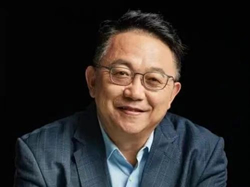Home> Academic Sessions
Session 28: Sugar-protein recognition and sugar containing drug transport systems
Updated: 2024-07-24
Through advancements in force measurement technology, glycan microarray technology, omics and structural biology, researchers are continually unraveling the complexities of glycan-protein recognition and interactions, particularly focusing on glycan clusters. These discoveries are paving the way for applications in diverse drug delivery systems.
One notable breakthrough is the development of a delivery system using GalNAc derivative structures to transport small interfering RNAs (siRNAs) to the liver, marking a significant milestone in the clinical application of siRNAs. These innovations will be highlighted in the upcoming session, showcasing the latest advancements in this field.
Chair

Wang Peng
Chair professor, Southern University of Science and Technology (SUSTech)
Invited speakers & reports
Zong Chengli
Professor, Hainan University
Report: Total chemical synthesis of heparin molecules and their utilization as drug carriers
Ye Mingliang
Researcher, Dalian Institute of Chemical Physics, Chinese Academy of Sciences
Report: Energy state difference-based new methods for drug target identification and their potential applications in research on the mechanism of polysaccharide drugs
Fang Junqiang
Professor, Shandong University
Report: Chemo-enzymatic methods for the synthesis and applications of functional oligosaccharides
Liu Xuewei
Professor, Nanyang Technological University
Report: TBA
Tao Shengce
Professor, Shanghai Jiao Tong University
Report: Novel proximal labeling technique (SPIDER) for discovering biomolecular interaction proteins
Wu Zhongfu
Professor, Northwest University
Report: ANPMP labeling-based construction and applications of natural oligosaccharide chips
Wang Peng
Chair professor, SUSTech
Report: TBA
Yu Xing
Hunan Normal University
Report: Unveiling the multifunctionality of heparanase: Enzymatic and non-enzymatic roles in tumor biology and bioengineering
